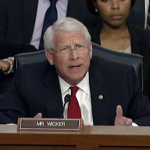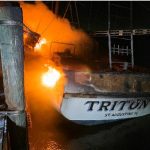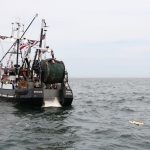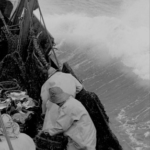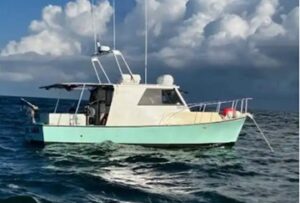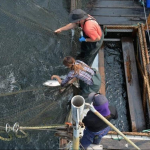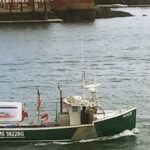Category Archives: Pacific
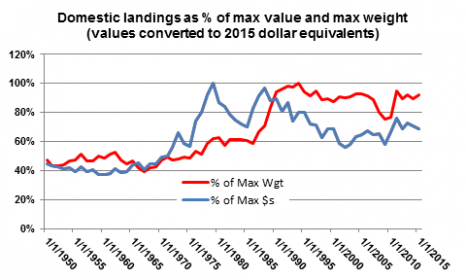
Nils Stolpe, Fishnet USA – So how are we doing? (2017 edition) A Report on our Domestic Commercial Fishing Industry
I occasionally share my impressions of how the domestic commercial fishing industry is doing, using as my primary data source the NMFS online database “Annual Commercial Landing Statistics” (click here). We are fortunate to have these extensive records of commercial landings of fish and shellfish in the United States extending back to 1950 because they allow a fairly comprehensive view of long term industry (and resource) trends. Among the most useful statistics are those dealing with the value and weight of the total landings for each year. Together they give an overview of how the domestic fishing industry is progressing (or regressing) from year to year. Click here to read the report 11:49
Lawsuit Launched to End Whale, Sea Turtle Entanglements in California Dungeness Crab Gear
 The Center for Biological Diversity today filed a formal notice of intent to sue California’s state wildlife agency for failing to prevent commercial Dungeness crab gear from entangling, injuring and killing threatened and endangered humpback whales, blue whales and sea turtles. California’s Department of Fish and Wildlife authorizes and manages operation of the fishery, which last year entangled at least 21 endangered or threatened whales, contributing to a third straight record-breaking year for entanglements along the U.S. West Coast. An endangered leatherback sea turtle was also caught in commercial Dungeness crab gear in 2016. Today’s notice letter notes that the Department’s failure to protect imperiled whales and sea turtles from entanglements in crab gear violates the federal Endangered Species Act. click here to read press release 20:47
The Center for Biological Diversity today filed a formal notice of intent to sue California’s state wildlife agency for failing to prevent commercial Dungeness crab gear from entangling, injuring and killing threatened and endangered humpback whales, blue whales and sea turtles. California’s Department of Fish and Wildlife authorizes and manages operation of the fishery, which last year entangled at least 21 endangered or threatened whales, contributing to a third straight record-breaking year for entanglements along the U.S. West Coast. An endangered leatherback sea turtle was also caught in commercial Dungeness crab gear in 2016. Today’s notice letter notes that the Department’s failure to protect imperiled whales and sea turtles from entanglements in crab gear violates the federal Endangered Species Act. click here to read press release 20:47
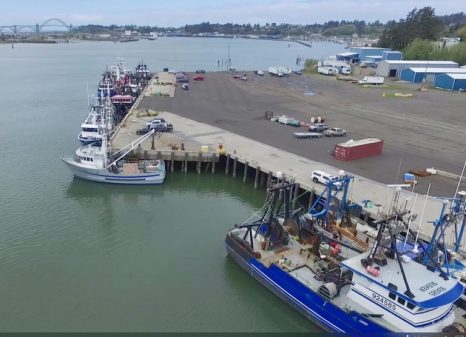
Port of Newport re-assessing access to new International Terminal
Three Newport Port Commissioners got an earful of opinions from local mid-water commercial fishermen Tuesday night down on the Bayfront. Over 80 fishermen showed up at the yachat club to tell the Newport Port Commission that they feel left out of the port’s plans in that the port seems to be focusing on bringing back heavy shipping to Newport at the expense of the Newport fishing fleet, the largest in Oregon and which is a major contributor to the Newport area economy. Fishermen reminded the commission that a promise was made a number of months ago that as the port began negotiations with the shipping industry, scheduling access to the International Terminal would be formulated to serve both the shipping industry and the fishing fleet. click here to read the story 08:49
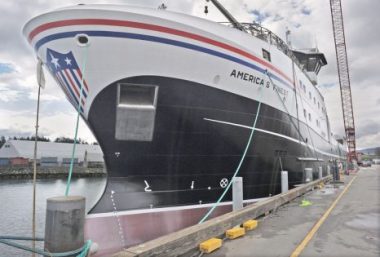
Dakota Creek Industries trying to make things right in eyes of Congress
Dakota Creek Industries owner Mike Nelson and his staff have been looking for ways to appease federal lawmakers following the mistake the company made in building the $75 million fishing vessel America’s Finest. The mistake — using too much foreign-formed steel in the vessel’s hull — requires a waiver from the U.S. Congress in order for the ship to fish domestically. The waiver would be for the Jones Act, which requires domestic fishing vessels be built in the U.S. These days, Nelson glances frequently at his cell phone hoping for good news concerning his company’s lobbying efforts in Washington, D.C. click here to read the story 12:12
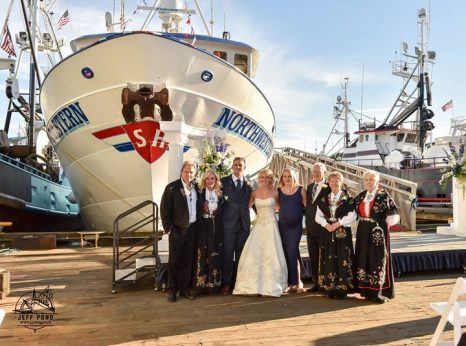
‘Deadliest Catch’ Star Sig Hansen Is A Grandfather, Just Days After Walking Other Daughter Down Aisle!
Just over a year after suffering a near fatal heart attack and spending a lot of time in courts with a recent lawsuit from his only biological child, and a recent arrest related to some drunken behavior during an Uber ride, Deadliest Catch favorite, Sig Hansen, has now become a grandfather to a baby girl. But that is not all that Sig’s been up to lately! He also walked his other daughter and fellow Deadliest Catch star, Mandy Hansen, down the aisle when Mandy married Sig’s deckhand and Deadliest Catch star Clark Pederson. What are all of the details of Sig’s whirlwind two weeks? click here for photo’s, read the story 12:41

Limited salmon numbers, sea lion population making tough season for fishermen
Governor Brown, along with Governor Jerry Brown of California, recently submitted a request to U.S. Commerce Secretary Wilbur Ross for a declaration of a “catastrophic regional fishery disaster,” and a commercial fishery failure. The request comes after the National Marine Fisheries Service closed the southern half of the Oregon coast to commercial salmon fishing to protect dwindling stocks of Chinook salmon on the Klamath River. “When you look at the Klamath situation, it affects fisheries all up and down the coast,” said Steve Fick, who owns Fishhawk Fisheries in Astoria. Executive Director of the Port of Astoria Jim Knight said the south coast closure will likely mean more fishing boats competing for limited numbers of salmon on the north coast. click here to read the story 08:09
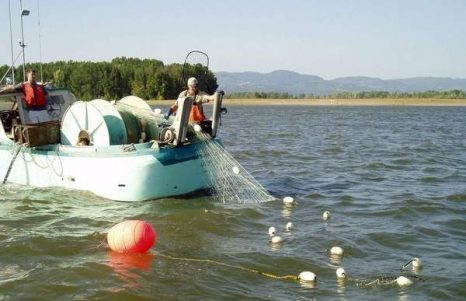
The Columbia River Fisheries Transition Fund – Money for gillnetters has never been tapped
A fund that was supposed to provide commercial fishermen $1.5 million to adjust to new regulations curtailing gillnetting in the Columbia River has never been tapped. The Columbia River Fisheries Transition Fund, a 2013 creation of the Legislature, was supposed to set aside $500,000 every two years to provide financial assistance to gillnetters through 2019. The money was intended to help fishermen buy replacement gear and offset economic harm due to the expected phasing out of gillnetting in the lower main stem of the Columbia. The money has not been used yet, and after some of it was reverted back to the general fund due to an accounting error at the state Department of Fish and Wildlife, the Legislature is now poised to do away with the last $500,000 installment. That leaves $500,000, a third of the amount initially intended, and it’s not immediately apparent whether gillnetters will end up applying for or receiving the money. click here to read the story 13:42
California fishermen, once blocked by conservationists, now work with them
 Morro Bay, a town on California’s central coast, touts itself as a fishing community. Fishing has been vital for the town’s economy, but it collapsed at the turn of the century because of overfishing and subsequent federal regulation. Fishermen were offered some relief money for their losses, but the industry was left for dead. Now, things are on the upswing thanks to an unlikely partnership between local fishermen and environmental group The Nature Conservancy.,,, The Nature Conservancy, a powerful nonprofit, became interested in the area more than a decade ago. Known for buying up land to protect it from development, the group’s first strategy was to buy up about half of all the available groundfish licenses. click here to read the story. 09:49
Morro Bay, a town on California’s central coast, touts itself as a fishing community. Fishing has been vital for the town’s economy, but it collapsed at the turn of the century because of overfishing and subsequent federal regulation. Fishermen were offered some relief money for their losses, but the industry was left for dead. Now, things are on the upswing thanks to an unlikely partnership between local fishermen and environmental group The Nature Conservancy.,,, The Nature Conservancy, a powerful nonprofit, became interested in the area more than a decade ago. Known for buying up land to protect it from development, the group’s first strategy was to buy up about half of all the available groundfish licenses. click here to read the story. 09:49
Chris Oliver Appointed to Lead NOAA Fisheries
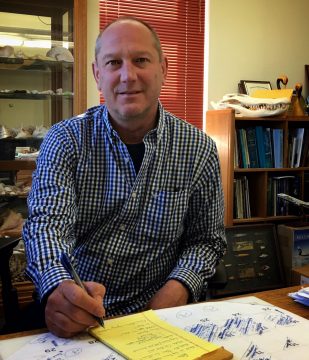 Today, Secretary of Commerce Wilbur Ross, with concurrence from the White House, named Chris Oliver Assistant Administrator for NOAA Fisheries. The Texas native assumed his new position on June 19, taking the helm from Acting Assistant Administrator Samuel Rauch who will return to his position as the Deputy Assistant Administrator for Regulatory Programs.,,, Oliver most recently served as Executive Director of the North Pacific Fishery Management Council, a position he held for the past 16 years. He has been with the Council since 1990, also serving as a fisheries biologist and then deputy director. During his tenure as executive director he led the way on several cutting edge management initiatives, including development of limited access privilege programs and fishery cooperatives and catch share programs, the North Pacific’s comprehensive onboard observer program, numerous bycatch reduction programs, extensive habitat protection measures, commercial and recreational allocation programs, and coastal community development programs. He was also responsible for all administrative and operational aspects of the Council process, and lead staffer for legislative and international issues. click here to read the press release 11:32
Today, Secretary of Commerce Wilbur Ross, with concurrence from the White House, named Chris Oliver Assistant Administrator for NOAA Fisheries. The Texas native assumed his new position on June 19, taking the helm from Acting Assistant Administrator Samuel Rauch who will return to his position as the Deputy Assistant Administrator for Regulatory Programs.,,, Oliver most recently served as Executive Director of the North Pacific Fishery Management Council, a position he held for the past 16 years. He has been with the Council since 1990, also serving as a fisheries biologist and then deputy director. During his tenure as executive director he led the way on several cutting edge management initiatives, including development of limited access privilege programs and fishery cooperatives and catch share programs, the North Pacific’s comprehensive onboard observer program, numerous bycatch reduction programs, extensive habitat protection measures, commercial and recreational allocation programs, and coastal community development programs. He was also responsible for all administrative and operational aspects of the Council process, and lead staffer for legislative and international issues. click here to read the press release 11:32
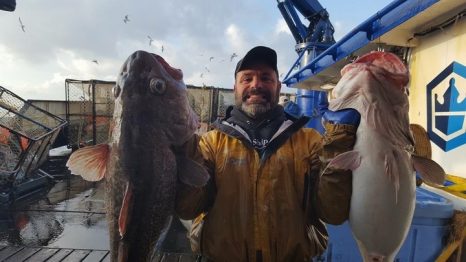
Matt Bradley Of ‘Deadliest Catch’ Shows That Recovery From Addiction Is Possible No Matter What
Although I’m in long term recovery and I work in the treatment industry, I still encounter people whose recovery amazes me. Matt Bradley is one of those people. Matt caught my attention when I saw him on an episode of Deadliest Catch. He’s a fisherman who has crewed with Northwestern for over a decade. What intrigued me wasn’t just the drama and action of the fishing crew, but Matt’s openness and honesty about his struggle with substance use. A long time drug user, Matt didn’t encounter the serious consequences that so many people face until he was in his 20s. Although he grew up with normalized drug use—-stealing joints and alcohol from the adults in his Section 8 housing development—-he didn’t really think he had a problem until he started using heroin. click here to read the story 15:40
Ocean polluters seek to have convictions overturned
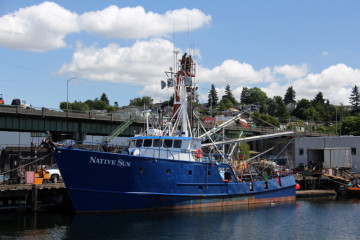 A father-son team that was convicted of polluting Puget Sound and the ocean have asked a judge to toss their convictions. In Seattle federal court on Friday, Bingham Fox asked the judge to throw out his conviction for violating the Clean Water Act. His attorney accused the government of “prosecutorial misconduct.” Fox and his son Randall Fox were convicted of pumping oily bilge water from their 80 fishing vessel “Native Sun.” A deckhand provided the US Coast Guard with a video showing a makeshift pump that pumped engine oil overboard while the vessel was in Blaine harbor. Federal law requires commercial vessels to filter out engine oil and dispose of it properly on shore, which costs time and money. click here to read the story 09:12
A father-son team that was convicted of polluting Puget Sound and the ocean have asked a judge to toss their convictions. In Seattle federal court on Friday, Bingham Fox asked the judge to throw out his conviction for violating the Clean Water Act. His attorney accused the government of “prosecutorial misconduct.” Fox and his son Randall Fox were convicted of pumping oily bilge water from their 80 fishing vessel “Native Sun.” A deckhand provided the US Coast Guard with a video showing a makeshift pump that pumped engine oil overboard while the vessel was in Blaine harbor. Federal law requires commercial vessels to filter out engine oil and dispose of it properly on shore, which costs time and money. click here to read the story 09:12
The “Redheaded Stepchild of Fishing” – Controversial drift-gill net fishery wins long-fought battle
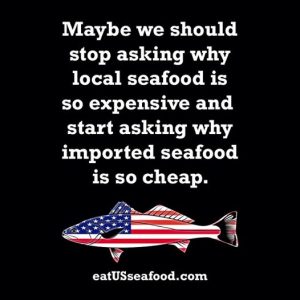 Federal fishery managers denied a proposal this week to immediately shut down Southern California’s most controversial fishery in the event that wide-mesh gill nets accidentally kill a handful of certain marine mammals or sea turtle species. The swordfish and thresher shark fishery will remain open, even if it kills several whales or sea turtles, the NOAA’s National Marine Fisheries decided. The decision not to institute so-called hard caps on the fishery comes after a public review period initiated last year was extended to discuss the law proposed by the state’s Pacific Fishery Management Council in 2014. For the few dozen fishers who still catch swordfish and thresher sharks off Southern California in deep-water drift gill nets, the decision brought a big sigh of relief. click here to read the story 08:38
Federal fishery managers denied a proposal this week to immediately shut down Southern California’s most controversial fishery in the event that wide-mesh gill nets accidentally kill a handful of certain marine mammals or sea turtle species. The swordfish and thresher shark fishery will remain open, even if it kills several whales or sea turtles, the NOAA’s National Marine Fisheries decided. The decision not to institute so-called hard caps on the fishery comes after a public review period initiated last year was extended to discuss the law proposed by the state’s Pacific Fishery Management Council in 2014. For the few dozen fishers who still catch swordfish and thresher sharks off Southern California in deep-water drift gill nets, the decision brought a big sigh of relief. click here to read the story 08:38

Construction project could be a boon for Whatcom commercial fishing fleet
The Port of Bellingham has awarded a $750,000 contract to American Construction of Tacoma to fix three deteriorated piers. Work is expected to be completed on two piers before Sept. 24, prior to the start of the fall commercial salmon and crabbing seasons in early October. Repairs to the Sawtooth Pier will start in early October so it doesn’t impact the commercial fleet during the summer. Both projects are not expected to impact recreation boaters at Blaine Harbor, said Mike Hogan, a spokesman for the port. The improvements will allow for more equipment and weight on the piers. Large areas of the three piers are currently under significant load restrictions, Hogan said. The fixes will also allow for more commercial ships to be tied up. click here to read the story 21:11
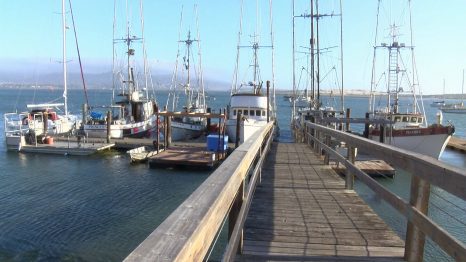
Local fishermen praise decision to cancel new protection for endangered animals
The new rule would have allowed for suspending swordfish fishermen for two entire fishing seasons if too many endangered animals were getting caught in their nets. After 35 years of fishing out of Morro Bay, Jeremiah O’Brien is breathing a sigh of relief for the industry. “We’ve got 110 permits on the West Coast and under 24 being used,” said O’Brien, who is also vice president of the Morro Bay Commercial Fishermen’s Association. Advocates say taking away the regulation hurts dwindling communities of endangered species, but O’Brien says fisherman already avoid catching endangered species at all costs. “The last thing we want is anything in the world but swordfish,” said O’Brien. The veteran fisherman says in the swordfish industry, they’re required to have observers on board with them, a vessel monitoring system, net limitations and strict off-limits areas in the Pacific Ocean. click here to read the story 12:40
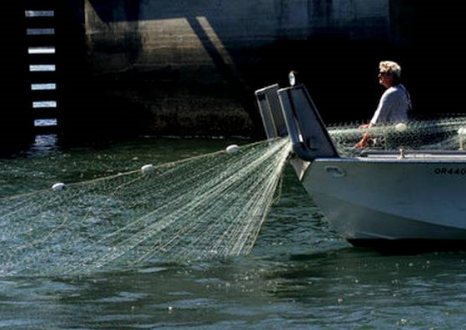
US cancels new protection for endangered West Coast whales
The Trump administration on Monday threw out a new rule intended to limit the numbers of endangered whales and sea turtles getting caught in fishing nets off the West Coast, even though the fishing industry had proposed the measure. The National Marine Fisheries Service said it decided the new protection was not warranted. The action is one of the first by the Trump administration targeting protections for threatened species off the Pacific coast, said Catherine Kilduff, an attorney for the Center for Biological Diversity conservation group. The regulation was designed to reduce the numbers of humpback whales, leatherback sea turtles and other large creatures that accidentally become tangled in mile-long nets set adrift by commercial fishermen overnight to catch swordfish off California and Oregon. click here to read the article (read between the lines, folks) 18:00
Letter: Sanctuary action has affected fishermen
A recent story on the Monterey Bay Sanctuary quotes Superintendent Paul Michel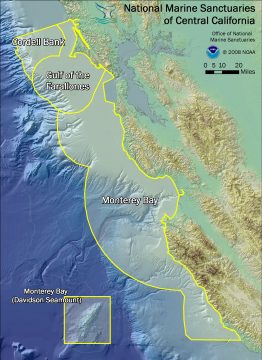 : “We do not regulate fishing … We have not negatively affected fisheries, in fact, over a half-billion dollars worth of fish have been landed since (sanctuary) designation.” That’s a surprise. There is ample evidence that sanctuary actions have negatively affected recreational and commercial fishermen. In 2007, fishermen witnessed the sanctuary’s leadership role in closing the best fishing areas in the region, displacing fishing effort to less productive areas. click here to read the letter (short and sweet) 10:29
: “We do not regulate fishing … We have not negatively affected fisheries, in fact, over a half-billion dollars worth of fish have been landed since (sanctuary) designation.” That’s a surprise. There is ample evidence that sanctuary actions have negatively affected recreational and commercial fishermen. In 2007, fishermen witnessed the sanctuary’s leadership role in closing the best fishing areas in the region, displacing fishing effort to less productive areas. click here to read the letter (short and sweet) 10:29
Oregon and California Senators seek fishery disaster declaration
 Oregon’s and California’s senators called for a federal salmon fishery disaster declaration for both states to support economic recovery for coastal communities, in a letter Friday to Commerce Secretary Wilbur Ross. The letter from Oregon Sens. Ron Wyden and Jeff Merkley and California Sens. Kamala Harris and Dianne Feinstein follows a request from Oregon Gov. Kate Brown and California Gov. Jerry Brown for the federal government to issue a fisheries disaster declaration to provide economic relief for the loss of coastal jobs due to declining salmon populations. Click here to read the story 17:00
Oregon’s and California’s senators called for a federal salmon fishery disaster declaration for both states to support economic recovery for coastal communities, in a letter Friday to Commerce Secretary Wilbur Ross. The letter from Oregon Sens. Ron Wyden and Jeff Merkley and California Sens. Kamala Harris and Dianne Feinstein follows a request from Oregon Gov. Kate Brown and California Gov. Jerry Brown for the federal government to issue a fisheries disaster declaration to provide economic relief for the loss of coastal jobs due to declining salmon populations. Click here to read the story 17:00
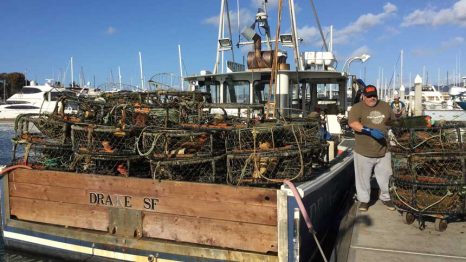
Fishing Community Tackles Trash in the Ocean
Fishing gear is not the biggest contributor to the “Great Pacific Garbage Patch” or other accumulations of trash in the ocean, but derelict gear left at sea after a fishing season does create problems. In California, the fishing community itself is creating a solution that improves the health of species and the environment, and the involvement and viability of local communities. There is typically no by-catch with pot fishing, said Andy Guiliano, a Dungeness crab fisherman from Emeryville, California. In Guiliano’s perspective, this makes the Dungeness crab fishery an environmentally friendly fishery. But Guiliano’s experience has tested this outlook. “The only Achilles’ heel is, inevitably, gear gets lost during the season,” Guiliano admitted — gear amounting to hundreds of crab pots as well as nets that can affect boat propellers and large whales. click here to read the story 08:42
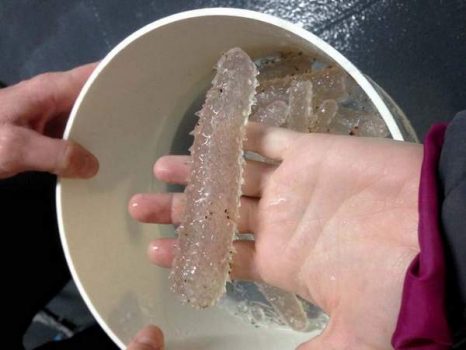
Pyrosomes: The Borg of the ocean, clogging fishing and research gear
A strange organism has taken over the ocean waters off Oregon this spring, clogging fishing and research gear and confounding beachcombers and biologists. Fishermen compare them to pickles, gummy bears and sea cucumbers. They are the Borg of the ocean, one researcher suggested, referencing characters from the “Star Trek” TV show. They are called pyrosomes, and they are everywhere. In all his decades doing survey and research work off the coast, Richard Brodeur, research fishery biologist with the National Oceanic and Atmospheric Administration, has never encountered pyrosomes in these kinds of numbers, or really at all. He knew about them, had seen them down in California, but never off the Oregon Coast. Then, “starting in 2014, we started seeing a few of them,” he said. In 2015 and 2016, he saw a few more. This spring, on a survey cruise, they pulled up 60,000 pyrosomes in a five-minute tow. click here to read the story 15:15
Pacific Fishery Management Council meeting in Spokane, Washington June 7‐14, 2017
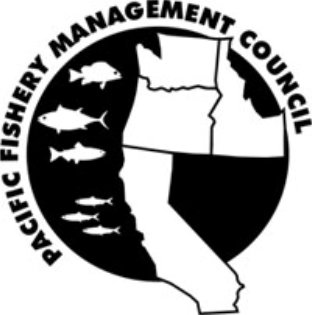 The Pacific Fishery Management Council (Council) and its advisory bodies will meet June 7‐14, 2017 in Spokane, Washington to address issues related to groundfish, coastal pelagic species (CPS), highly migratory species (HMS), Pacific halibut, and habitat matters. For agenda item topics, please click to see the June 7-14, 2017 Meeting Notice WITH Detailed Agenda The Council meeting will be live‐streamed. Click here to Listen to the Live Audio Stream. Enter the Webinar ID The April 2017Â Webinar ID is: 897-986-459 Please enter your email address (required) The meeting will be broadcast live starting at approximately 9 am Pacific Time on Friday, June 9, 2017 For more info, click here 18:32
The Pacific Fishery Management Council (Council) and its advisory bodies will meet June 7‐14, 2017 in Spokane, Washington to address issues related to groundfish, coastal pelagic species (CPS), highly migratory species (HMS), Pacific halibut, and habitat matters. For agenda item topics, please click to see the June 7-14, 2017 Meeting Notice WITH Detailed Agenda The Council meeting will be live‐streamed. Click here to Listen to the Live Audio Stream. Enter the Webinar ID The April 2017Â Webinar ID is: 897-986-459 Please enter your email address (required) The meeting will be broadcast live starting at approximately 9 am Pacific Time on Friday, June 9, 2017 For more info, click here 18:32
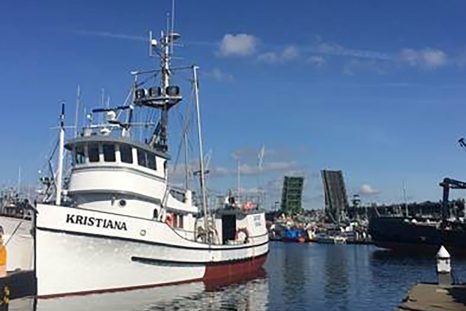
Meet the skippers of Fishermen’s Terminal
The boats in the commercial fishing fleet at Fishermen’s Terminal range from 30 to 250 feet long, depending on the type of gear used. Think trawlers, gillnetters, purse seiners, longliners and pots. Although most skippers set sail in the spring (and return late summer or fall), preparation for the season starts several weeks or months ahead of time. Michael Offerman, 40, from Edmonds, starts thinking about the fall and winter projects he needs to tackle on his 69–foot boat, Kristiana, while out at sea during the summer. Typical post-season touch-ups include painting, remodeling and electrical and mechanical tweaks, followed by a thorough inspection. click here to read the story 13:02
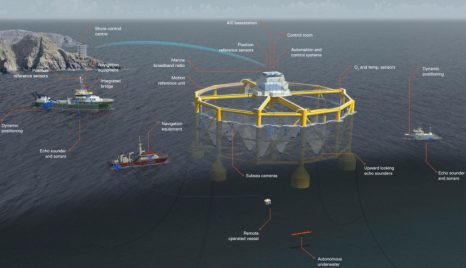
21st Century salmon
As Alaska struggles to maintain commercial productivity in its most-valuable, wild-salmon fisheries, competition in the fish market is looming on every horizon. Land-based salmon farms are popping up in odd places across the U.S., and the Norwegians and the Chinese are teaming to take salmon farming to new heights or, more accurately, new depths offshore. China.org today reported the first delivery of a deepwater, “intelligent offshore farm” to the Norwegian company SalMar ASA. “Ocean Farm 1” is designed to be positioned in water 300 to 600 feet deep where currents can sweep it clean in four dimensions while computers monitor its performance. “It is the world’s first offshore salmon farming equipment built on the same principle as semisubmersible installations used in the offshore oil and gas drilling sector,” the Chinese national website said.,, Open-ocean fish farms have been touted as one path to greening a business sometimes blamed for polluting protected bays and coves with fish waste. click here to read the story 08:38
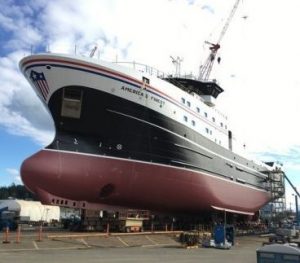
New Anacortes-built trawler could be grounded by old law, endangering two local firms
The largest, most modern American-made trawler built in nearly three decades may be barred from fishing in U.S. waters, with financial repercussions to its local builder and buyer “so draconian that neither company may survive.” That’s the scenario painted by the law firm that Anacortes shipyard Dakota Creek Industries has hired to seek a rare waiver from a century-old law called the Jones Act, which they acknowledge wasn’t properly followed when the shipyard began building the state-of-the art, $75 million vessel Americas Finest. The shipyards mistake using too much foreign steel that was modified before coming into the U.S. could mean the advanced ship must be sold abroad at a big loss. click here to read the story 08:40
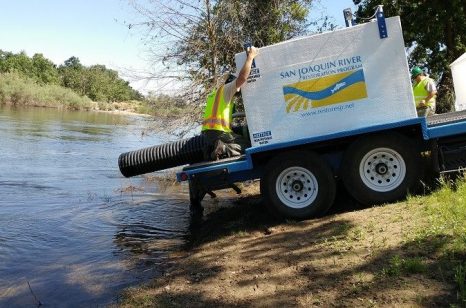
With a Lot of Help, Chinook Salmon Return to the San Joaquin River
In California’s Central Valley, dusty dry riverbeds fill with water that for decades has been diverted for farmers and cities. Hatchery-reared salmon – bred with taxpayer funds – are being reintroduced in hopes of rebooting ancient populations that disappeared in the 1940s, casualties of California’s ceaseless search for new water sources. The San Joaquin River, the state’s second largest, is primed for its comeback. After the Sacramento River, the San Joaquin is California’s most important river. It provides some of the state’s largest agricultural operations with water as it stretches north from Fresno before finally emptying into the Sacramento-San Joaquin River Delta – the source of drinking water for an estimated 25 million Californians. The process of damming, diverting and plumbing the 366-mile river for irrigation and urban water use leaves main portions of the river dry during parts of the year. Following the opening of Friant Dam in 1942, entrepreneurs gobbled up the river’s fertile wetlands and replaced them with crops and gravel mining operations. The dam was a boon to the already prospering agricultural region. But as water-intensive crops like almonds and pistachios went in, the native Chinook salmon disappeared. click here to read the article 17:25
Jury delivers for ‘Deadliest Catch’ crabber maimed by firework
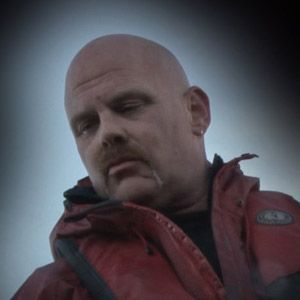 A “Deadliest Catch” crabber maimed by a fireworks explosion aboard the fishing vessel Time Bandit has been awarded $1.35 million by a King County jury. Jan. 13, 2013, should have been a good day for David “Beaver” Zielinski, who was headed out to sea for another season aboard the Hillstrand brothers’ crab boat. Instead, Zielinski’s hand was badly injured when a Time Bandit-brand firework exploded in the launcher he was holding. The explosion that left Zielinski injured occurred as the “Deadliest Catch” crew was filming another Bering Sea snow crab season of the Discovery documentary series. Time Bandit captains Johnathan and Andy Hillstrand have been heavily featured on the program, which is currently in its 13th season. Zielinski sued the Hillstrands’ companies two years ago in King County Superior Court. click here to read the story 09:20
A “Deadliest Catch” crabber maimed by a fireworks explosion aboard the fishing vessel Time Bandit has been awarded $1.35 million by a King County jury. Jan. 13, 2013, should have been a good day for David “Beaver” Zielinski, who was headed out to sea for another season aboard the Hillstrand brothers’ crab boat. Instead, Zielinski’s hand was badly injured when a Time Bandit-brand firework exploded in the launcher he was holding. The explosion that left Zielinski injured occurred as the “Deadliest Catch” crew was filming another Bering Sea snow crab season of the Discovery documentary series. Time Bandit captains Johnathan and Andy Hillstrand have been heavily featured on the program, which is currently in its 13th season. Zielinski sued the Hillstrands’ companies two years ago in King County Superior Court. click here to read the story 09:20
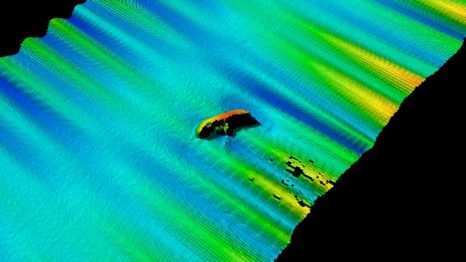
Where is the lost fishing boat Tammy? Two wreck hunters think they know.
Calm seas and clear weather greeted the fishing boat Tammy as it set out from San Pedro on July 11, 1994, to cast its nets for sea cucumbers — and then disappeared. The 40-foot, steel-hulled vessel carried a crew of four Vietnamese fishermen that night. Two of their bodies were found the next day in the shipping lanes off Newport Beach. The others were never recovered. “To this day, we do not have even a death certificate for my dad because they never found him,” Thai Minh Ta said of Cong Minh Ta, the boat’s owner. Now, more than two decades later, two men with extensive experience in researching and identifying submerged wrecks think the long-lost fishing boat might rest on the ocean floor in 70 feet of water near the entrance to the Port of Long Beach. click here to read the story 20:10
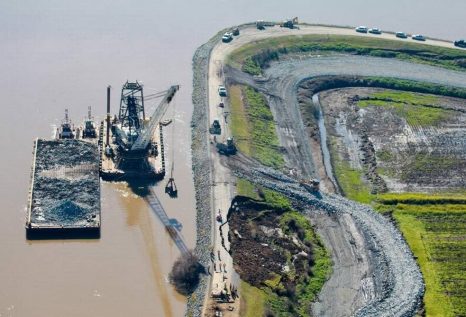
Jerry Brown sends a message to water agencies on the Delta tunnels – and it’s direct
Jerry Brown took an Old English turn from his Latin wisdom in 2012 by declaring: “I want to get s— done,” a reference to his vision for building two tunnels 30 miles long to move Sacramento River water south from the Delta to the rest of the state. And in 2015, addressing California water agencies, he offered pithy advice to naysayers: “Until you put a million hours into it, shut up.” Critics of the $15 billion project were greatly offended. “Two 40-foot diameter tunnels that can take the entirety of the Sacramento River at most times of the year of just seems like a bad idea to salmon fishermen,” said John McManus, executive director of the Golden Gate Salmon Association. “Rank-and-file salmon fishermen don’t trust them when they say, ‘Trust us.’ ”
There’s an element of hypocrisy on the part of Bay Area environmentalists, who drink water piped from Hetch Hetchy. Delta interests have all the water they could possibly want. But the fishing industry has a real beef. Dams deplete salmon runs. click here to read the story 10:45
Newport Coast Guard Helicopter funding looks promising – not a done deal, but close
 Encouraging news out of Washington DC that a two year extension of funding for the Coast Guard rescue helicopter base at Newport Airport has been approved by a vote of both Democrat and Republican members of the House Committee on Transportation and Infrastructure. The vote is but another step toward ultimate approval by the whole Congress. click here to read the story 18:28
Encouraging news out of Washington DC that a two year extension of funding for the Coast Guard rescue helicopter base at Newport Airport has been approved by a vote of both Democrat and Republican members of the House Committee on Transportation and Infrastructure. The vote is but another step toward ultimate approval by the whole Congress. click here to read the story 18:28
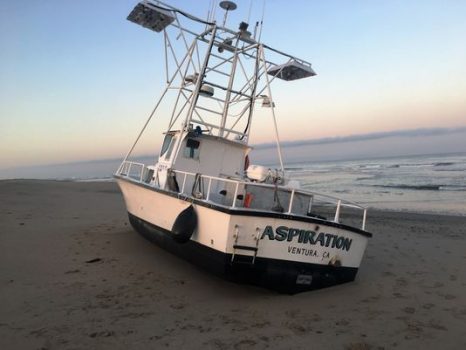
Fishing vessel run aground in Ventura Harbor, California
The Coast Guard responded to a grounded vessel south of Ventura Harbor Sunday. Members of Coast Guard Marine Safety Detachment Santa Barbara and Coast Guard Station Channel Islands Harbor responded to a 36-foot commercial fishing vessel at approximately 1 a.m., after it ran aground near the mouth of the Santa Clara River. MSD Santa Barbara led the response and investigation efforts with the aid of Coast Guard Station Channel Islands Harbor, Coast Guard Sector Los Angeles-Long Beach, Ventura Harbor Patrol, Ventura Fire Department, and Oxnard Fire Department. No injuries or pollution have been reported. The Coast Guard is currently working on the safe removal of the vessel and its contents. The cause of this incident is still under investigation. USCG 08:46
Competitors ask court to undo Pacific Seafood expansion
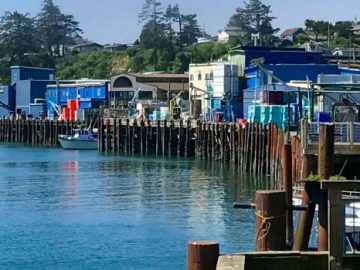 In the two weeks since Pacific Seafood announced it would consolidate its dominant position on Newport’s Bayfront with the acquisition of two additional fish processing plants, the deal has generated more litigation than fish fillets. On Thursday, two companies who claim Pacific illegally conspired with its competitors to lock them out of the Newport seafood processing business, filed an antitrust lawsuit in federal court to undo the transactions. The lawsuit alleges Pacific, under the leadership of third-generation Chief Executive Officer Frank Dulcich, acquired three properties on Newport’s Yaquina Bay in the past 23 months even though the plaintiffs offered more money. click here to read the story 08:17
In the two weeks since Pacific Seafood announced it would consolidate its dominant position on Newport’s Bayfront with the acquisition of two additional fish processing plants, the deal has generated more litigation than fish fillets. On Thursday, two companies who claim Pacific illegally conspired with its competitors to lock them out of the Newport seafood processing business, filed an antitrust lawsuit in federal court to undo the transactions. The lawsuit alleges Pacific, under the leadership of third-generation Chief Executive Officer Frank Dulcich, acquired three properties on Newport’s Yaquina Bay in the past 23 months even though the plaintiffs offered more money. click here to read the story 08:17




































